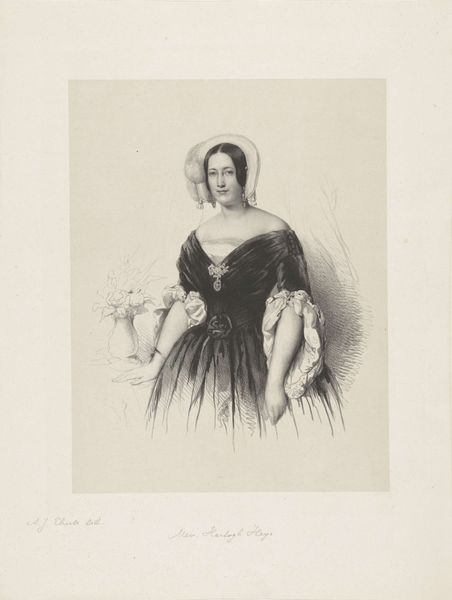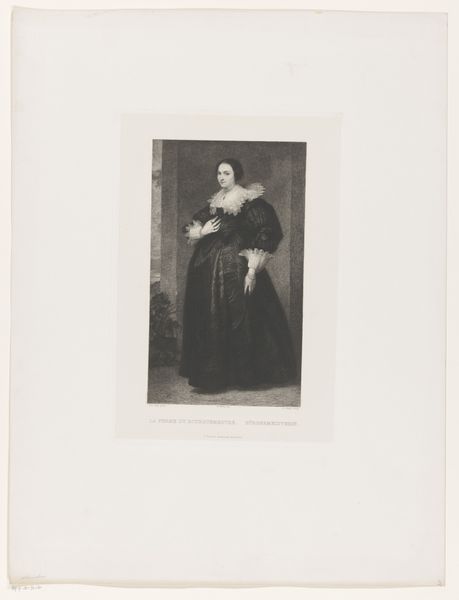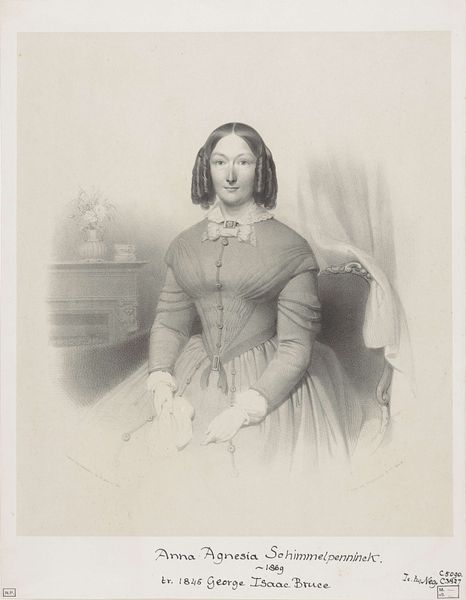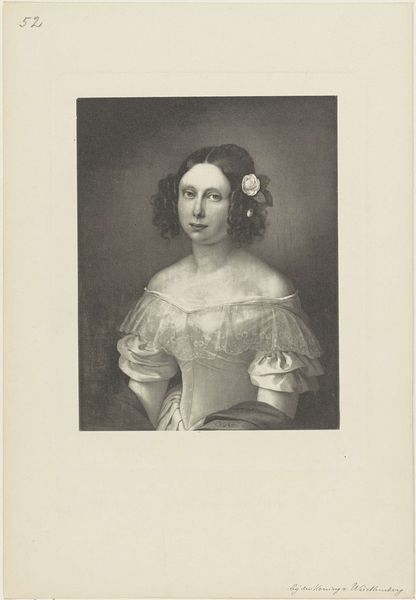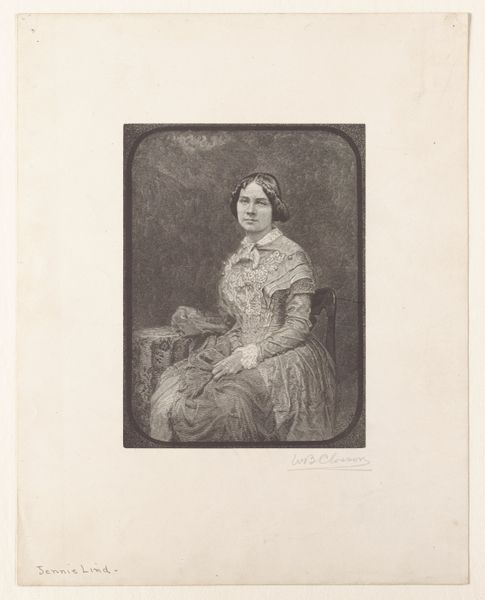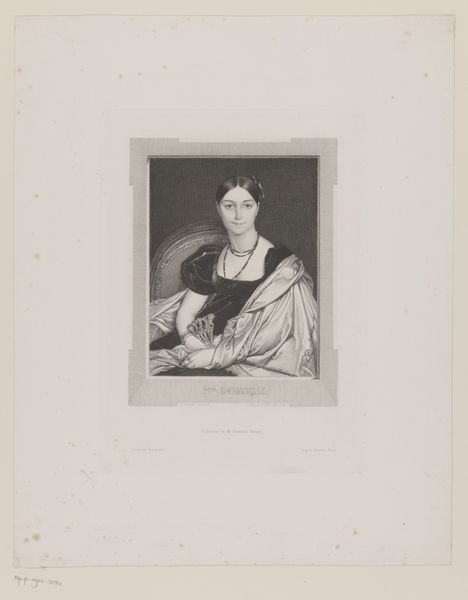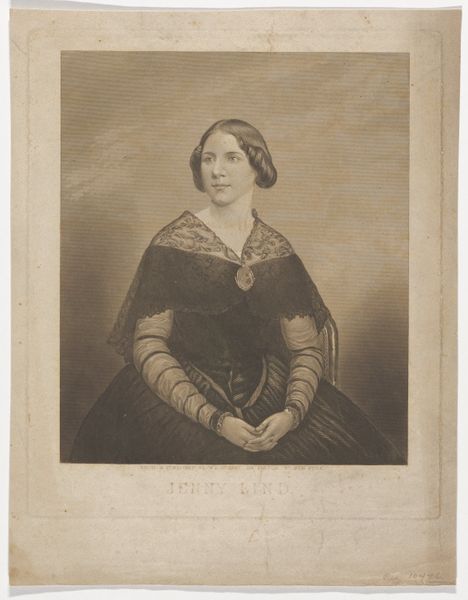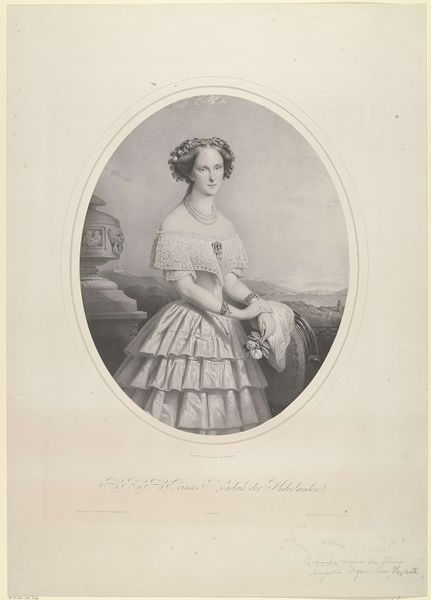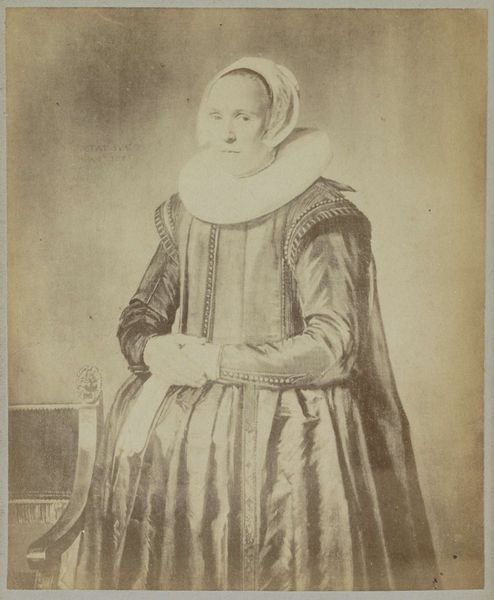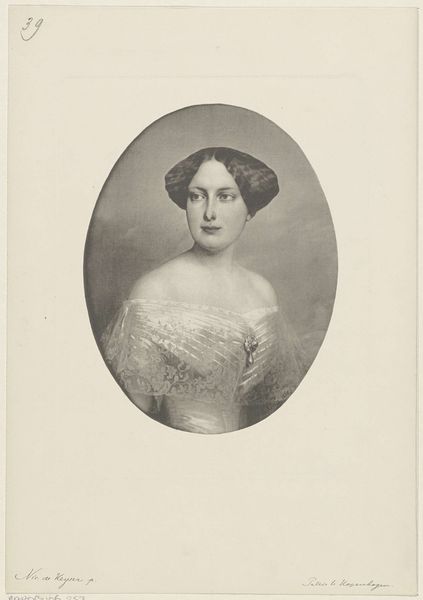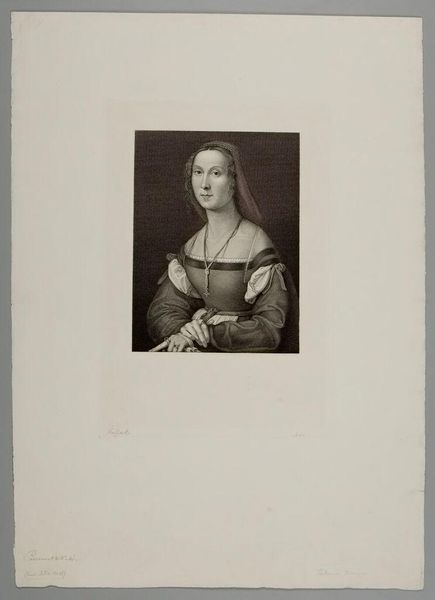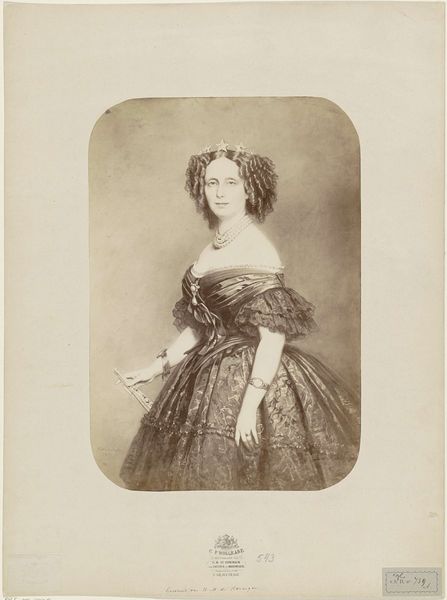
#
photo of handprinted image
#
personal snap photobooth
#
wedding photograph
#
photo restoration
#
wedding photography
#
light coloured
#
archive photography
#
historical fashion
#
wedding dress
#
celebration photography
Dimensions: height 232 mm, width 177 mm
Copyright: Rijks Museum: Open Domain
Curator: Here we have an intriguing portrait from the 19th century, titled "Portret van Sophie van Württemberg." It's currently held in the Rijksmuseum, though the artist remains anonymous. Editor: It's quite striking! There's a quiet dignity to the subject. But look at the density of her dress, it seems to dominate the composition; I’m drawn to that sense of mass. What kind of materials do you imagine were used to create the photographic print? Curator: The dress absolutely dictates so much here. The darker fabric is a classic symbol, though, don’t you think? It signifies respect, maybe even mourning, especially for upper-class women of that era. Note, too, how she’s posed in front of a vaguely classical backdrop. This tells us about her aspirations to be seen as sophisticated, as cultured. Editor: Interesting point, the implied mourning, and sophistication. I’m much more curious about the construction of her attire, especially the textures – the satin ribbons, the lace… the time spent. I see a huge investment of labor – hours upon hours – rendered through the chemical reactions that imprint this image. What story does her labor tell us? Curator: Well, on the subject of "story," observe her posture – hands folded delicately, rings and bracelets clearly displayed. Her hands tell the story of a life of leisure, really; this reinforces what the classical allusions in the set design try to say about her education and station. And the slight turn of her head and glance outward are a subtle appeal to the viewer's gaze. Editor: And those are precisely the type of societal functions of adornment which require these fabrics and construction—upholding specific status claims. Still, there’s something alluring about this woman and how her likeness came to exist on this particular material. A tactile object becomes an ethereal claim. It almost seems oxymoronic! Curator: Precisely! And it reveals the complex language of symbols used at that time to communicate ideals of beauty, power, and decorum. These aren’t arbitrary flourishes, but cues deeply embedded within their culture, their social structures. I notice these kinds of cues every time. Editor: I keep seeing an example of labor converted into status—and now that is indelibly on this material—almost woven in the photograph itself! That thought just underscores the economic system underlying even her modest gaze. It leaves me contemplating our system now and if it changed so much at all. Curator: Agreed! Her “decorum” seems at the edge of something still recognizable! It reminds me what shifts so slightly but importantly across eras.
Comments
No comments
Be the first to comment and join the conversation on the ultimate creative platform.
